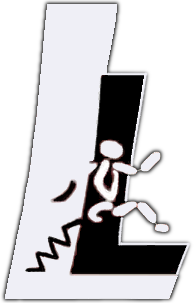Warning: Undefined array key -1 in /is/htdocs/wp1019470_OPI92FFHXV/www/_lauflabor_v3/inc/html.php on line 1458
Differences
This shows you the differences between two versions of the page.
| Both sides previous revision Previous revision | |||
|
publications_podcasts_pick_of_the_month [2014/03/04 14:05] Martin Grimmer |
publications_podcasts_pick_of_the_month [2014/03/20 13:59] Dario Tokur [Compliant ankle function results in landing-take off asymmetry in legged locomotion.] |
||
|---|---|---|---|
| Line 3: | Line 3: | ||
| ===== Compliant ankle function results in landing-take off asymmetry in legged locomotion. ===== | ===== Compliant ankle function results in landing-take off asymmetry in legged locomotion. ===== | ||
| + | \\ | ||
| + | [{{ : | ||
| The spring loaded inverted pendulum (SLIP) model is widely used to explain basic characteristics of human walking and running. Its periodic running solutions can be mirrored at the instant of the vertical orientation of the leg and thus are symmetric between landing and take-off. In contrast, human running shows asymmetries between touchdown and take-off (e.g. shorter brake than push duration, greater mean ground reaction force during braking phase). Yet it is not fully understood whether these asymmetries are caused by asymmetric muscle properties (e.g. velocity-dependent force generation) or the asymmetric lever arm system in the human leg. We extend the SLIP model by a foot segment and a compliant ankle joint (called FSLIP). This represents the extended foot contact and the displacement of the center of pressure during contact. | The spring loaded inverted pendulum (SLIP) model is widely used to explain basic characteristics of human walking and running. Its periodic running solutions can be mirrored at the instant of the vertical orientation of the leg and thus are symmetric between landing and take-off. In contrast, human running shows asymmetries between touchdown and take-off (e.g. shorter brake than push duration, greater mean ground reaction force during braking phase). Yet it is not fully understood whether these asymmetries are caused by asymmetric muscle properties (e.g. velocity-dependent force generation) or the asymmetric lever arm system in the human leg. We extend the SLIP model by a foot segment and a compliant ankle joint (called FSLIP). This represents the extended foot contact and the displacement of the center of pressure during contact. | ||
| The FSLIP model shows the same asymmetries as found in human running without considering asymmetric muscle properties. Together with the reversed asymmetry observed in human backward running, this indicates that the asymmetric lever arms created by the foot can cause the observed landing-take-off asymmetry in human running. | The FSLIP model shows the same asymmetries as found in human running without considering asymmetric muscle properties. Together with the reversed asymmetry observed in human backward running, this indicates that the asymmetric lever arms created by the foot can cause the observed landing-take-off asymmetry in human running. | ||
| - | {{: | + | |
| - | Stance phase (A) in FSLIP and (B) in human running. Black lines show the leg spring axis and the foot segment (FSLIP model) respectively the line from hip to heel and heel to metatarsal marker (human running), grey lines indicate the alignment of the GRF. | + | |




